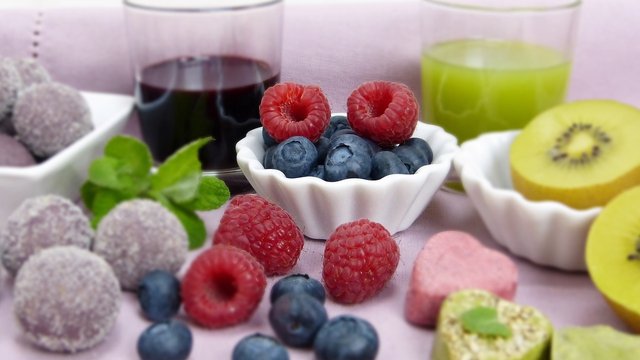Unlike deprivation-based diets, the volumetric dietary approach helps people find healthy foods to eat lots of while still losing weight. The plan is flexible enough for vegetarians, vegans, and those who need to limit salt and fat, and It urges you to be mindful of your eating habits and food choices, which can help you make healthier food choices by prioritizing lower calorie-dense foods like fruits and vegetables.

Volumetrics diet aims to reduce feelings of hunger by prioritizing foods high in water content and low in calories. It also encourages other healthy habits, like regular exercise and keeping a food journal.
This diet provides specific plans for increasing exercise to at least 30 minutes per day.
Rolls says in some cases it allows you to eat more not less than you do now, while still losing weight. You won’t lose much weight fast and It’s more of a long-term plan.
Choosing foods with a low-calorie density is particularly effective because these foods are substantial in volume but low in calories, you can eat large portions without significantly increasing your calorie intake. You lose weight when you feel full with fewer calories.
What You Can and Can’t Eat on Volumetrics diet?
You can eat almost anything, but you should pay attention to “energy density,” which is the number of calories in a given amount of food. High-energy-density foods pack a lot of calories for little nutrition, but low-energy-density foods pack fewer calories with more volume.
Here’s what you can eat on a typical day on the Volumetrics diet:
Breakfast: Veggie omelet with a side of whole-wheat toast.
Mid-morning snack: Low-fat Greek yogurt with fruit.
Lunch: Lean chili with beans and veggies.
Afternoon snack: Popcorn with a glass of milk.
Dinner: A piece of fish, steamed vegetables, quinoa.
Rolls cut up meals into 4 categories:
Categorie 1. Consists of fruits, nonstarchy veggies along with broccoli, tomatoes, mushrooms, and broth-primarily based totally soups.
Categorie 2. Consists of affordable quantities of complete grains along with brown rice and complete-wheat pasta, lean proteins, legumes, and low-fat dairy.
Categorie 3. Consists of small quantities of meals along with bread, desserts, fats-loose baked snacks, cheeses, and higher-fats meats.
Categorie 4. Consists of sparing quantities of fried meals, candy, cookies, nuts, and fats.
No food is forbidden. You’ll devour 3 meals, snacks, and a dessert every day.
Sample volumetric nutrition list:
-Fresh fruit
-Fresh or frozen vegetable
-Beans and legumes
-Whole grains
-High-fiber breakfast cereals
-Low-fat fish
-Skinless poultry Lean meats.
How does the volumetric diet work?
At the beginning of the volumetric diet, opt for water-rich foods. These play an important role in volumetry, as water adds weight to food without accumulating extra calories.
Your best bets are soup (70% to 90% water), fruits and vegetables (70% to 90% water), yogurt (80% water), pasta (60% water), and hummus.

Will Volumetrics Diet help you lose weight?
You will very likely lose weight following the volumetrics plan. In general, diets rich in low-energy-dense foods have been shown to promote fullness on fewer calories and deliver weight loss, according to the Centers for Disease Control and Prevention. Several systematic reviews and meta-analyses of observational studies have found lower energy-dense diets to be associated with lower body weights. Enjoying a diet based on foods that are naturally high in water and low in energy density is a great strategy to satisfy hunger and fill up on fewer calories.
The Volumetrics plan will teach you how to make better food choices and slash calories without deprivation, emphasizing foods with a low-calorie density, which can increase weight loss and improve overall diet quality.
*Learn more ... https://chefweight.com/what-is-the-volumetrics-diet-and-does-it-work-for-weight-loss/
Hello welcome to Steemit world!
I'm @steem.history, who is steem witness.
This is a recommended post for you.Newcomers Guide and The Complete Steemit Etiquette Guide (Revision 2.0) and, recommended community Newcomers Community
I wish you luck to your steemit activities.
(The bots avatar has been created using https://robohash.org/)
@steem.history
My witness activity
Reference
SPUD4STEEM project
Newcomers Community,Steem Sri Lanka ,WORLD OF XPILAR, GLOBAL STEEM, Scouts, Latino Community
My featured posts
please click it!
(Go to https://steemit.com/~witnesses and type fbslo at the bottom of the page)
Downvoting a post can decrease pending rewards and make it less visible. Common reasons:
Submit